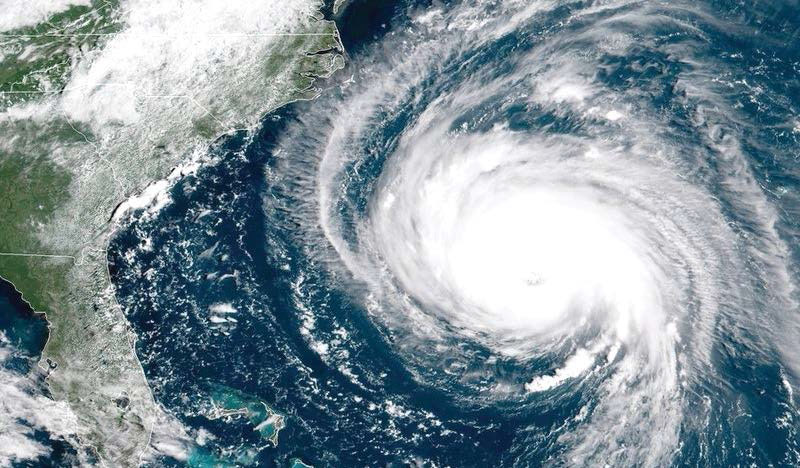Hurricane Florence in a 5G World
COWS and COLTS and Goats, oh my! No Dorothy, this isn’t Oz. It’s the Carolinas and Georgia as Hurricane Florence bore down on its way to landfall.
An interesting article by Angela Moscaritolo in PC Magazine online, “How Mobile Carriers Are Responding to Hurricane Florence,” described the steps carriers like Verizon, AT&T, Sprint and T-Mobile were taking to prepare for the aftermath of the hurricane.

She wrote: “…Verizon said it’s readying a fleet of mobile equipment—including Cells on Wheels (COWS), Cells on Light Trucks (COLTS), and generators on a trailer (Goats)—which can be rolled into hard-hit areas in need of extra network capacity.” The other carriers were taking similar steps, the article said.
According to the FCC report on outages as of this writing (Sept. 18), 4.1 percent of cell sites in affected counties in Georgia, Virginia, South Carolina and North Carolina were out of service. That’s down from 10.7 percent on Sept. 15, which is impressive. However, 30 or more percent remained down as of Sept. 18 in North Carolina’s Columbus, Onslow and Pender counties.
No doubt COWS, COLTS and Goats were being used to breach the gap in coverage.
But what will happen in a 5G world where massive MIMO antennas are deployed throughout the nation affixed to telephone poles and other structures numbering in the hundreds of thousands or more?
Even though the damage wrought on the cell sites in the areas affected by Florence was minimal compared to other storms, such as Super Storm Sandy, 670,000 people in North Carolina and 59,000 in South Carolina were left in the dark according to a Newsweek story citing Duke Energy as of Sept. 16. It’s hard to imagine how COWS, COLTS and Goats could possibly help in a 5G world with so many antennas.
Of course, there will be no magic switch thrown that abruptly changes over cell infrastructure and consumer phones from 4G to 5G. A transition will take place during which a power outage created by a calamity may take down large swaths of 5G antennas, but 4G service and dual radio phones will remain.
But what about that time beyond the transition when 4G service has all but evaporated?
Fortunately for the public, broadcasters will remain on the air distributing critical lifesaving information during emergencies. According to the FCC damage report, 42 of 45 TV stations reporting remained on the air in the wake of the storm. Nearly one million more residents in the Charlotte, Greensboro and Raleigh areas tuned into local newscasts on broadcast TV stations the week of the storm than the previous week as Hurricane Florence approached the East Coast and made landfall in the Carolinas, according to data from ratings measurement service Nielsen.
Imagine how much better stations could serve the public during future hurricanes and other dangers if cell phones were equipped with ATSC 3.0 receivers that fully support enhanced warnings delivered via AWARN.
One can only hope that wireless companies and broadcasters put aside turf wars for the sake of public safety, or in the absence of magnanimity, that regulators take the needed steps to enhance emergency communications nationwide by one day mandating 3.0 receivers in wireless handsets.
Get the TV Tech Newsletter
The professional video industry's #1 source for news, trends and product and tech information. Sign up below.
Phil Kurz is a contributing editor to TV Tech. He has written about TV and video technology for more than 30 years and served as editor of three leading industry magazines. He earned a Bachelor of Journalism and a Master’s Degree in Journalism from the University of Missouri-Columbia School of Journalism.

